National Seminar
December 01st & 02nd, 2023
Tradition and Modernity:Complementary or Takeover of Governance in Tribal Areas
Issues of Social-Economic-Political Structures and Processes in India
Tribal communities and their functioning have garnered immense interest for research in the world and in India. There is a huge data base on tribals across the globe. The studies and data collection have different objectives from a human interest to care and concern to exploitation of tribals and their natural resources. Scholars, academics, social interventionists, media people and government have studied tribal communities from various perspectives. But all had a main purpose of knowing and understanding the communities, their way of being and functioning.
A large amount of research literature on tribals in India exists and deals with tribal ecology, economy, arts and crafts, medicine, customary laws, magic, witchcraft, religion, and culture (include dress, music, dance, drama, festivals, ceremonies, and so on) (Shah 2010: 21[i]). However, there is very little literature on tribal political life and engagement in the political sphere at the community, local, regional and state level. Only after Surajit Sinha’s (1962[ii], 1965[iii] and 1987[iv]) explorative works, some enquiries on this dimension have been added by anthropologists and historians (Kulke 1976[v], Thusu 1980[vi], Hardiman 1994[vii], Guha 1996[viii], Sundar 1997[ix], Skaria 1999[x] and Panda 2005[xi]) became available. Even then most of these studies remain limited to either the central or eastern part of India. The Western India does not gain much focus on in number of studies. There is also very little information about the tribal political structure of traditional self-governance in the form of a Tribal Panch or Council.
Governing Institutions in Tribal Areas
Governance has been defined to refer to structures and processes that are designed to ensure accountability, transparency, responsiveness, rule of law, stability, equity and inclusiveness, empowerment, and broad-based participation. Governance is also defined as the way rules, norms and actions are structured, sustained, regulated and held accountable.
With regard to tribals in India, there exist two forms of governance. One is an informal way of control at the social, societal or communitarian level, represented by Tribal Councils. This system is very much ingrained with the tribal way of life. Tribal communities sit together to arbitrate disputes, exercise social and religious control and take decisions especially related to agricultural activities through a body of the Tribal Panch comprising of three body members with specific roles. Here, life is not divided into different watertight compartments such as economic, religious, social, administrative and political, as in the formal structure of government, but as an organic whole. In some tribal villages of Gujarat this system is very much alive suggesting the greater social legitimacy to a tribal system of traditional governance mechanism.
The second is a formal one represented by the constitutional body of governance such as gram panchayat (hereafter GP) and State government. In order to protect the tribal society, culture and customary law through self-governance and making available the provisions of the development programs of a democratic state, the Panchayat Extension in Scheduled Area (PESA) Act, 1996 was implemented. It provides an opportunity to Panchayats for a decentralized governance in tribal areas “in consonance with the customary law, social and religious practices and traditional management practices of community resources”. Currently the Act has been extended to 9 states- Andhra Pradesh, Chhattisgarh, Gujarat, Himachal Pradesh, Jharkhand, Maharashtra, Madhya Pradesh, Orissa and Rajasthan. But only five states have framed rules for implementation of PESA, they are Andhra Pradesh, Himachal Pradesh, Maharashtra, Orissa and Rajasthan (Dung 2017[xii]).
It is almost 27 years since PESA came into being, but it cannot be negated that the process of a globalized economy, and an indispensable role of money power and political power become a hurdle to total self-governance at a grass-root level. However, there are success stories (like in few districts of Orissa, and MP), which needs to be paid attention to and lessons to be learnt. Such stories could help in knowing about making decentralized governance effective in scheduled areas and how their achievement of local-self-governance can be replicated in other Scheduled areas in the country to actually strengthen the local polity and development by the local people.
At the same time, it is also important to address how the statutory Panchayat has assumed some functions and, in several places, taken over some tasks of a traditional governance system. Whether these systems are undermining each other, or competing, and being complementary or being duplicated? And how does these dynamics affect the socio-political aspects of the local tribal people?
Issues, Concerns and Opportunities
There has been a continuous decline in the area of forest land, (where tribals largely reside) due to industrialization, agriculture plantation, setting up of wildlife reserves, national parks, mining and hydroelectricity projects initiated by the government and the private sector. The government of India has initiated several affirmative policies, schemes and enacted laws for the welfare, development and protection of tribal populations. However, in spite of these positive efforts tribal people are still lagging behind compared to other social groups in India. Can we blame a weak local governance for this? Whether dual governance system’s complementary role with strong PESA implementation can bring the needed change?
One aspect of PESA is of tribal development and autonomy. Autonomy is desired so that development policies are evolved to suit the tribal culture and lifestyle. Absence of PESA in practice in scheduled areas means discarding their autonomy of governance. Moreover, the policy of capital intensive industrialization adopted by the Indian government in the name of development among all has affected the Tribals most. Since the process required mineral resources and power generation capacities, which were concentrated in the tribal areas lead to the rapid acquisition of tribal lands that falls mainly in forests for new mining and infrastructure projects. As a result, tribals get displaced without any appropriate compensation or rehabilitation justified in the name of economic growth. Such growth-policies often subjugate the tribals and cause the degradation of the resources upon which they depended. In this scenario it can be said that the growth process has not been ‘inclusive’ with regard to the tribal by and large. Also, the gains in local economy do not seem to be bringing commensurate gains to the tribal in terms of education, health and general public infrastructure (Sarma 2009[xiii]).
It is paradoxical that the tribal areas are rich in mineral, forest, water resources and wealth of rare flora-fauna and rich biodiversity, but such natural resources have been exploited in the name of infrastructure development subjecting to the deprivation of tribal communities. On account of rain-fed agriculture and absence of other avenues of employment the Tribal people suffer from the poverty–induced migration. Fragmentation of land, loss of land due to acquisition and illegal land alienation by non-tribals which also cause people to migrate. Deforestation and decreasing access to forests and drought are other contributory factors for tribal migration. It is estimated that, in the last decade, about 3.5 million tribal people left agriculture and agriculture related activities to enter the informal labour market. Tribal people fear loss of identity, land, and destruction of forests, jobs and losing political control (Purshottam and Dhingra 2017[xiv]). In Gujarat the land alienation among tribals is very rampant across the northeastern belt. It is reported that officially about 7-8% of tribals are alienated from the land; and informal surveys reveal this extent to 15%. The state government has taken steps like launching the Joint Forest Management, Vanbandhu Yojana and other development programmes, but its effect is limited in providing employment and a better quality of life (Anwar 2022[xv]).
The tribal community also lags behind the national average on several health indicators, with women and children being the most vulnerable. India with 8.6% of tribal population is finding it difficult to bridge the gap that exists between tribal and non-tribal populations in regard to healthcare. The Tribal population suffers a triple burden of disease; in fact it is quadruple, namely, communicable diseases, non-communicable diseases, malnutrition, mental health, and addictions complicated by poor health seeking behavior. Mere establishment of PHCs and sub-centres cannot overcome the poor health of the tribal population. Scarcity of trained manpower to deliver quality health services is the major problem and an obstacle to the extension of health services to rural and tribal areas (Kumar, Pathak and Ruikar 2020[xvi]).
Education is one of the means of the development and an important parameter for any inclusive growth in an economy. It is well known that the educational background of tribes is very discouraging as compared to the rest of the population. Throughout the country, out of 152 districts (with more than 25 percent of ST population), 28 districts have ST literacy below 50 percent and 9 districts have female ST literacy rate below 30 per cent (Statistics of School Education 2010-2011 2012[xvii]). In spite of constitutional guarantees and persistent efforts, the tribal communities of the country continue to lag behind the non-tribal population in education (Sahoo 2019[xviii]). The reasons are multiple. There are external constraints related to problems and difficulties at levels of policy, planning, implementation and administration. Internal constraints associated with the school system, content, curriculum, medium of instruction, pedagogy, academic supervision, monitoring, and teacher related problems. The third set of reasons relates to social, economic and cultural background of tribal’s and psychological problems of first- generation learners (Gangele 2019[xix]). In Gujarat there have been several additional and special arrangements for education in tribal areas-458 residential schools, known as Ashramshalas, 89 post-basic schools, 935 hostels for tribal boys and girls, 53 model residential schools, 19 Eklavya residential schools, one military school, 23 dry hostels, 50 government hostels, coverage of 5,838 students under talent pool and supply of textbooks to 12,835 tribal students. Unfortunately, all these schemes lack effective implementation (Anwar 2022).
The employment status of tribals also shows that their engagement in regular jobs is the least among all social groups. The majority of them are still involved in low productive agriculture and other low paid work also reflected from their high level of incident of poverty. Their poverty level is almost four times more than the general category and twice of OBCs and also significantly higher compared to SCs. They represent a higher share in poor quality jobs such as casual labour and low paid self-employment in the Indian labour market. This also indicates unemployment in the community due to which the educated tribal youth are either forced to work as daily wagers in the unorganized sectors or migrate for better options (Mehta and Singh 2021[xx]). A study by Behavioural Science Centre, Ahmedabad, in the seven districts of south Gujarat, showed that despite being educated, the tribal youths face large scale of unemployment. Responsible factors included lack of quality education, lack of diversity of subject streams and professional courses in colleges, a financial crunch, less exposure to the mainland and lack of awareness of the market needs (Anwar 2022).
When compared to non-tribal counterparts, the gender relations in tribal societies appear to be rather egalitarian. But in a traditional sense they are not equal to men, but they do have a greater social status when compared to non-tribal women. This could be because of their economic value due to their participation in economic activities. Tribal women as such enjoy very little control over immovable property. They hardly ever inherit land, however, in their own world women have a freedom, and a self-expression (Paray 2019[xxi]). Like their counterparts, tribal women are not away from the impact of socioeconomic changes on society in general. They had also been facing multiple deprivations of lack of access to healthcare and proper medicines, lack of literacy and education opportunities, poor access to government benefits, issues of low wages, bad working conditions, low empowerment and lack of sense of independence. Additionally, due to male migration one can see the feminization of agriculture and poverty in tribal areas.[xxii]
On the one hand the tribal areas are losing its land to development projects but on the other hand, the biodiversity rich tribal areas are receiving attention for its traditional indigenous or tribal medicine practiced by the ethnic communities. Most of the tribal economies are engaged in subsistence agriculture and have developed a greater knowledge on the use of plants and plant production in curing various ailments. The leaves, roots, fruits, bark and seeds are the materials for tribal medicines. Tribals possess rich knowledge on the medicinal plants and their utilization. Being once considered as superstitious, the research on natural products during the past few decades by the western and Indian institutions brought to limelight the age-old knowledge of aboriginals (Vedavathy 2002[xxiii]). In the time of rapid deforestation in the name of development, growth and over harvesting of tribals habitat how far the indigenous medical system, with tribals’ participation could be revived is a question that needs to be further examined. Exploitative trade of medicinal plants in also a matter of concern. Nevertheless, certain efforts need to be welcomed. For instance, digitizing of the tribal knowledge on medicinal and other valuable plants, and medicinal knowledge getting branded and registered under trademark and geographic indication (GI) like brands for local herbs found in Dangs, Gujarat.[xxiv]
The waves of privatization and globalization have a major impact on every aspect of human existence, including socio- economic, politics, and society at large. The Tribals and indigenous communities have entered a new phase of struggle against the process as it has alienated them from the development yet encroachment of their habitat for the economic growth for others. Moreover, the alienation also excluded them from reaping the benefits of modern infrastructure, communications and education largely.
Objective of the Seminar
To examine some of the highlighted issues mentioned above the Centre for Culture and Development, Vadodara is organizing a two days national seminar. The seminar is an attempt to bring various experiences together and understand the tribal communities with respect to their social and political governance and how they affect the socio-political aspects of the local tribal people, their rights and their wellbeing in the human index.
CCD therefore, invites participants – students, scholars, social activists, grassroots community facilitators and others who are working with or doing research on tribal regions/communities to present papers in the seminar. The paper could be about their work, research findings, shared stories/experience and observations about the tribal communities and on the issues of their governance, political, social, economic and ecological concerns. The seminar will provide a platform for generating insights and findings from various perspectives and socio-political context.
Seminar Themes and Topics
This seminar invites papers on the following themes/subthemes focused on the Tribal communities.
- Traditional Tribal Self-Governance in India
- Traditional Tribal self-governance: Present Practice and Status,
- Advantage and Disadvantage of Traditional Self-Governance,
- Gender and Patriarchy in Traditional Self-Governance,
Tribal Villages/States and PESA in India
-
- Is PESA a Reality or a Myth?
- Traditional self-Governance and PESA: Complementary or Contrast
- PRI and PESA- Centralization and Decentralization Governance: Problems and Solutions
- Tribal Villages/Areas and Development
- Tribal Habitats- Access and Control of Natural Resources
- Development and Tribal Participation
- Displacement, Relocation and Rehabilitation
- Eco-tourism: Boon or Bane
- Tribal Villages/Areas and State
- Tribals and Political Participation: Status and Impact
- Party Politics and Local Governance in Tribal villages
- Tribal political parties: Are they Voice of Tribals?
- Indian Tribals: Politics of Language, Religion, Identity and Struggle for autonomy
- Social Issues of Tribal Community
- Tribal Community in Higher Education: Issues and Challenges
- Tribal Youth and Unemployment
- Empowering Tribals: How and Ways?
- Migration of Tribals: Gains and Loss
- Tribal and Livelihood Issues
- Traditional Health Industry: Indigenous Medicine and Tribals
- Indigenous Medicine and Recognition
- Traditional Medicine and Healing practices among tribes
- Exploitation of Traditional Medicine
- Religious Faith of Tribal and Politics of Conversion
- Gender and Tribal Community
- Tribal women and labour participation.
- Gender justice and Human Rights of Tribal Women
- Health of Women
- Feminization of agriculture and Poverty
- Double-burden of labour: Work and Family
Paper Submission
Interested people can send their Abstracts (of 250-350 words), to ccdgujarat@gmail.com by July 31, 2023. Presenters will be informed about the selection of their abstracts by August 15, 2023. The selected papers by the authors will be later published in a book form if they meet the publishing requirement and quality. The final paper needs to be in 5000 words maximum.
Date and Venue of the Seminar
The seminar will be held on 01st and 02nd of December, 2023 at:
Centre for Culture and Development
Xavier Technical Institute Campus, Sevasi,
(Opposite Sonarkui village bus stop),
Vadodara – 391101, Gujarat, INDIA
References
[i] Shah, A. M. (2010). The Structure of Indian Society: Then and Now. Delhi: Routledge.
[ii] Sinha, Surajit. (1962). ‘State Formation and Rajput Myth in Tribal Central India.’Man in India, 42 (1), 35–80.
[iii]_____(1965). ‘Tribe-Caste and Tribe-Peasant Continua in Central India.’ Man in India, 45 (1), 57–83.
[iv]_____(ed.). (1987). Tribal Polities and State Systems in Pre-Colonial Eastern and North Eastern India. Calcutta: K.P. Bagchi & Co.
[v] Kulke, Hermann. (1976). “Kshatriyaization and Social Change: A Study in Orissa Setting.” In S. Devdas Pillai (ed.), Aspects of Changing India: Studies in Honour of Prof. G. S. Ghurye. Bombay: Popular Prakashan, pp. 398–409
[vi] Thusu, Kidar Nath. (1980). Gond Kingdom of Chanda. Calcutta: Anthropological Survey of India.
[vii] Hardiman, David. (1994). “Power in the Forest: The Dangs 1820–1940.” In David Arnold and David Hardiman (eds.), Subaltern Studies VIII. Delhi: Oxford University Press, pp. 89-144.
[viii] Guha, Sumit. (1996). ‘Forest Polities and Agrarian Empires: The Khandesh Bhils c. 1700–1850.’ Indian Economic and Social History Review, 33(2), 133–53.
[ix] Sundar, Nandini. (1997). Subalterns and Sovereigns: An Anthropological History of Bastar, 1954–1996. Delhi: Oxford University Press.
[x] Skaria, Ajay. (1999). Hybrid Histories: Forests, Frontiers and Wilderness in Western India. New Delhi: Oxford University Press.
[xi] Panda, Premananda. (2005). Traditional Political System of Binjhals. New Delhi: Northern Book Centre.
[xii] Dung, Joachim. D. (2017). ‘An Implication of Three Tier Panchayati Raj Vs Pesa-1996 in Scheduled Areas of Sundargarh (A Short Vision of Katang Gram Panchayat),’ International Journal of Management, IT & Engineering, Vol. 7 (5), 1-10.
[xiii] Sarma, G.V.V. (2009). “Some Critical Issues in Tribal Development.” In Ota, A.B. (Ed.): Critical Issues in Tribal Development. Bhubneshwar: Scheduled Castes & Scheduled Tribes Research and Training Institute, pp1-4.
[xiv] Purshottam and Dhingra, V. (2017). ‘Understanding the Indian Tribal Life And Their Issues.’ International Journal of Advanced Research, 5(7), 1588-1595.
[xv]Anwar, Tarique. (2022). ‘Gujarat Elections: With Tribals’ Literacy Rising, Unemployment Makes Youth Vulnerable’, Newsclik, 27 November. Retrieved from: https://www.newsclick.in/gujarat-elections-tribals-literacy-rising-unemployment-makes-youth-vulnerable
[xvi] Kumar, Mohan. M; Pathak, Vineet, K. and Ruikar, Manisha. (2020). ‘Tribal population in India: A Public Health Challenge and Road to Future.’ Journal of Family Medicine and Primary Care, Vol.9 (2), 508–512.
[xvii] Statistics of School Education 2010-2011. Indian Education Report, New Delhi: Bureau of Planning, Monitoring and Statistics, Ministry of Human Resource Development, Government of India, 2012.
[xviii] Sahoo, Pitabasa. (2019). ‘Educational Status of Scheduled Tribes in India. ‘International Journal of Research in Social Sciences, Vol. 9 (10), 193-201.
[xix] Gangele, Alankrita. (2019). ‘The Tribal Educational Status in India: Galore Challenges and Issues.’ Journal of Emerging Technologies and Innovative Research, Vol. 6 (1), 182-191.
[xx] Mehta, Balwant. S. and Singh, Bharat. (2021). ‘Employment and Livelihoods among Tribal in India.’ Journal of the Anthropological Survey of India, Vol.70 (2), 264–277.
[xxi] Paray, Mohd Rafi. (2019). ‘Status of Tribal Women in India with Special Reference to the Socio-Economic and Educational Condition Status of Tribal Women in India.’ Elementary Education Online, Vol 18 (4), 2284-2292.
[xxii] https://www.insightsonindia.com/social-justice/issues-related-to-sc-st/tribal-women/
[xxiii]Vedavathy, S. (2002). ‘Tribal Medicine – The Real Alternative.’ Indian Journal of Traditional Knowledge, Vol. I (I), 25-31.
[xxiv]https://economictimes.indiatimes.com/industry/healthcare/biotech/pharmaceuticals/gujarats-indigenous-tribes-to-get-brand-registration-for-tribal-medicines/articleshow/14593740.cms

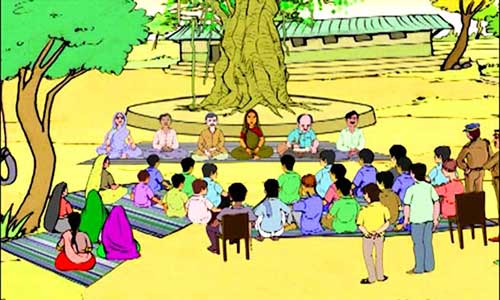
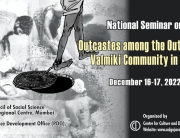
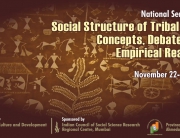
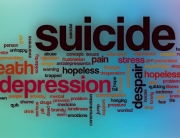
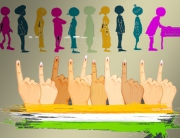
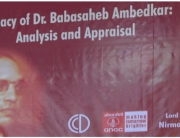
Add Comment